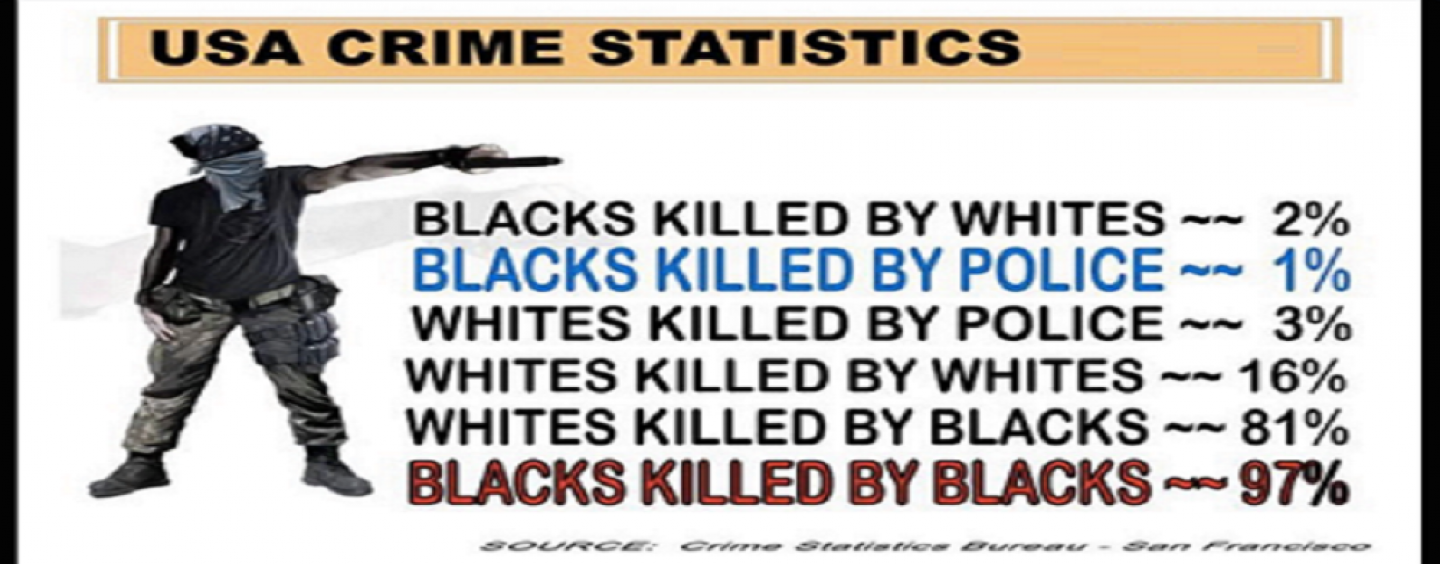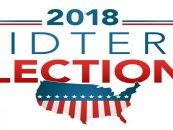
BLACK FOLKS! I See U Change Behavior To Stop The CoronaVirus But What About The NegronaVirus? (Live News Editorial)
by Tj Sotomayor March 23, 2020 0 commentsStop The Negrona Virus!
By: Tommy “Tj” Sotomayor
CLICK HERE TO SEE THE CALL IN PORTION OF THIS SHOW!
The Need to Discuss Black-on-Black Crime

Thomas Abt’s book Bleeding Out (2019) has garnered a fair amount of attention for its proposals to deal with gun violence in mainly black urban neighborhoods. The entire focus of the book is on interventions in high-crime locations to stem the violence, including: hot-spots policing, working with young males at high risk of engaging in violence by offering carrots (“we’re here to help you”) and sticks (“we’ll stop you if you don’t let us help”), and locking up known violent offenders. TOP ARTICLES1/5READ MORETo Protect the Future, Hold China toAccount
Lest you think this book is not about black crime, Abt states quite explicitly that “race matters when it comes to urban violence.” He points out that homicide-victimization rates for black men were 3.9 times the national average and that 52 percent of all known homicide victims were black (2017 data). He might have added that the perpetrators of these crimes were overwhelmingly African Americans. In 2018, where the homicide victim was black, the suspected killer also was 88 percent of the time. And this is not an exceptional situation. From 1976 to 2005, 94 percent of black victims were killed by other African Americans. In fact, as I will demonstrate, high rates of black-on-black killing have been the norm for well over a century. But this is not an issue Abt wants to address.
To the contrary, Abt abjures the phrase “black on black.” He calls it “deeply misleading” and says it “perpetuates deeply harmful stereotypes about African Americans.” So Abt has written an entire book addressing the problem, but he and everyone else must refrain from calling it what it is: a black-on-black phenomenon. Why?
Abt offers three reasons. First, violent crime is commonly intraracial, i.e., whites kill whites, Hispanics kill Hispanics, and so on. But, Abt says, we don’t talk about white-on-white violence. Well, that’s simply not true. Many analysts, myself included, discuss white violence, especially where it had a major impact on crime in the United States. This was the case with southern whites especially from the 18th through the 20th centuries, a situation studied extensively by crime historians and criminologists.
The reason we focus more on black-on-black violence nowadays is not racism but rather its significance to the crime problem in the United States. Presumably this is why Abt has written an entire book on the subject. Black violent crime was a major factor in the post-1960s crime tsunami and persisted even after the wave began to ebb in the 1990s. From 2000 to 2015, the mean African-American homicide-victimization rate, adjusted for age, was 20.1 per 100,000. That’s more than three times the Hispanic rate of 6.4 (despite disadvantages comparable to those of blacks) and over seven times the average white rate, 2.7. Moreover, as already noted, from 1976 to 2005, 94 percent of the killers of black murder victims were other African Americans. In short, this is about exceptionally high as well as overwhelmingly intraracial black violent crime. White-on-white homicide is equally intraracial, but, as Abt knows, the rates are not astronomically high.
Though Abt considers it a malign narrative, stressing that a major component of today’s violent-crime problem is black-on-black underscores the tragic irony of African-American victimhood. It is, in addition, an argument for support from African-American leaders and the general black population for more-focused law-enforcement efforts in low-income neighborhoods of color — the very policies that Abt advocates.
Abt’s second objection is that the expression “black on black” carries an “implicit assumption that urban violence is the result of chronic lawless behavior enabled by community tolerance for criminality.” Abt says this assumption is wrong because African Americans are worried about and strongly disapprove of violence in their communities. That is correct, but there is also a deep strain of mistrust of police in poor black neighborhoods, and this, along with fear of reprisals by black criminals, leads to a refusal to cooperate with the authorities. Such noncooperation only worsens the black-crime problem by providing impunity for the most violent.
Here are two vivid examples. Though several dozen people were present when rap star Busta Rhymes’s unarmed security guard was shot to death in 2006, not one would talk to detectives. And when rapper Lil’ Kim lied to police about her friends’ involvement in another shooting — earning her a year in jail for perjury — she became a hero in black communities.
Actually, Abt fully recognizes the problem. The “stop snitching ethos,” he says, “perpetuates itself by preventing criminals who victimize communities from being brought to justice.” But if rates of black violent-crime are excessive (which they are), if these high rates have persisted over a long term (which they have), and if the stop-snitching ethos aggravates the problem (which it does), then the statement that Abt decries is at least partially correct. Urban violence is deplored by the black community, but at the same time it is enabled by a culture of noncooperation.
Now to Abt’s “deeply harmful stereotypes” claim. Here he relies on Khalil Gibran Muhammad’s 2011 book The Condemnation of Blackness, on the use of black crime statistics in the late 19th to early 20th centuries to support a racial-inferiority narrative. The Progressive era, wrote Muhammad, was “the founding moment for the emergence of an enduring statistical discourse of black dysfunctionality.” Based on this narrative, adds Abt, “crime by European immigrants was explained away while crime among African Americans remained racialized as a matter of community or family values.”
But immigrant crime around the turn of the 20th century was scarcely ignored or excused and certainly was not “explained away.” The prejudice against immigrants from southern Italy, for example, is notorious. In one of the most horrific incidents in American history, eleven Italian prisoners were dragged from a New Orleans jail and lynched in 1891, following the acquittal of nine of them for the murder of the city’s police chief. The New York Times and Theodore Roosevelt expressed approval of the outrage, and one of the organizers of the mob, who later became the governor of Louisiana, wrote that Sicilian Americans were “just a little worse than the Negro, being if anything filthier in [their] habits, lawless, and treacherous.”
In reality, racist ideology was common in this period and was used against Native Americans and Chinese as well as Italian immigrants, indeed against any social group with high crime rates or other antisocial behaviors. The word “race” was broadly applied to ethnic and even religious groups (such as Jews), whereas the modern concept of “culture” was in its infancy and not widely accepted. Contrary to Abt, notions of racial inferiority were widespread and certainly were not reserved solely for blacks.
In any event, the argument is a straw man. Any narrative built on a supposition of the inherent (i.e., biological) inferiority of people of color has been thoroughly discredited since the civil-rights movement of the 1960s, while the statistics on black crime during the period discussed by Muhammad remain valid. Though Abt seems unaware of it, black-on-black violent crime was excessive in the late 19th century and, despite ups and downs, has been high relative to other social groups throughout the 20th century and up to the present day.
Writing in 1899, none other than W. E. B. Du Bois, a great champion of African-American equality, was one of the first to note the “vast problem” of Negro crime, a problem that “since 1880 . . . has been steadily growing.” Du Bois was prescient. Rates of black violent crime continued to grow — even before the Great Migration and the “ghettos” that developed in the North in the 1920s.
Despite the lynchings and other mistreatment by whites in the late 19th century, black homicide was overwhelmingly carried out by other African Americans. In Savannah, Ga., for example, from 1896 to 1903, researchers found 91 homicides in which the race of both the offender and the victim were known. Sixty-eight of the victims (75 percent of all those killed) were black, and 61 African Americans, or 90 percent of the alleged perpetrators, were arrested for these murders.
In the North, where the black population was small prior to the migration, the pattern of black-on-black killing was the norm. In Philadelphia, from 1839 to 1901, two-thirds of the homicide indictments of African Americans were for killing other persons of color.
In the 20th century, the number of black victims escalated while the killers remained overwhelmingly African American. In Memphis from 1920 to 1925, where African Americans were 38 percent of the population, black-on-black killings were two-thirds of all murders in the city (in which race was known).
An examination of coroner’s files uncovered 500 homicide victims in Birmingham, Ala., between 1937 and 1944. The city’s population was roughly 40 percent black, but 85 percent of both the killers (418) and the killed (427) were African American.
In the 1940s, when the black migration resumed after a hiatus during the Great Depression, more northern cities began to reflect the increased black violence. In Cleveland, which was 16 percent black in the ’40s, African Americans were the victims in 71 percent of the felonious homicide cases from 1947 to 1953. Whites were accused in six of the cases; blacks, in 320.
In the contemporary period, from 1976 to 2014, it is estimated that 198,288 African Americans died nationwide at the hands of black killers. That’s 5,218 deaths per year on average, roughly 19 times the annual number of deaths of African Americans in confrontations with police.
This brings us to Abt’s third argument, which accuses “black-on-black proponents” of diverting attention from law-enforcement abuses. The forbidden phrase, he asserts, is “weaponized to absolve broader society of responsibility not just for urban violence but also for police violence.” This is another straw man. There is no reason we can’t acknowledge the black-on-black-crime problem and address police abuse. Abt himself takes a similar position without uttering the b-on-b words. Referring to urban black offenders, he says, “We can catch more killers and support the other strategies discussed in this book at the same time.” These strategies include improving the fairness of law-enforcement policies in order to increase the legitimacy of police in black communities.
When he says that “broader society” is responsible for black violence, Abt means that white racism is to blame.
Racial disparities in crime and punishment are real, but they have been produced in large part by a sustained campaign of persecution by whites against disempowered minorities, particularly African Americans. Officially, that effort has ended; overt racial discrimination has been prohibited by law for decades. Nevertheless, the brutal legacy of that campaign — racism, segregation, concentrated poverty, and violence — remains.
There are problems with this white-racism theory. First, one would expect higher levels of black crime when the racial oppression was at its maximum, and lower levels when it was less so. But that hasn’t been the case. Black homicide rates were about the same as white homicide rates during slavery. They frequently were higher in the North than in the more oppressive South throughout the 20th century. And they hit new peaks in the late 1960s, a time when whites supported the most sweeping civil-rights legislation in American history.
Second, if white abuse was responsible for black violence, why weren’t whites targeted more often? Why were other African Americans overwhelmingly the victims? Why was black-on-black violence elevated even after lynching and Jim Crow were no longer powerful disincentives to black-on-white crime?
Third, how do we explain levels of black violence out of all proportion to African-American disadvantage? Other groups suffer comparable adversities — Hispanics, for example — but have much lower rates of violence. Though the poverty rate for Hispanics is 92 percent of the rate for blacks, African Americans have three times the homicide rate. Indeed, many of the low-income black immigrants to the United States, such as the Haitians who flooded into southern Florida in the 1980s, had lower violent-crime rates than did the African-American residents. This despite the fact that they too were black and impoverished and had suffered a legacy of the most brutal slavery.
There are better explanations for black-on-black violence, including the cultural theories that Abt dismisses without any serious consideration. A compelling case can be made that African Americans, having spent centuries in the South, adopted the southern white penchant for violent responses to perceived insults and affronts, what Thomas Sowell once called the “black redneck” phenomenon. On this view, black criminal violence was the product of the southern-male honor culture that, among black men of lower socioeconomic status, manifested as a violent response to petty insults, sexual rivalries, etc. Since African Americans interacted socially with other persons of color much more than with whites, the victims of such honor-culture assaults were overwhelmingly black. This violence continued when African Americans migrated to the North. Indeed, it escalated in the northern cities, where there was greater freedom and less oppression.
Racism did play a role here, but not the role usually assigned. Discrimination kept large numbers of blacks from rising to the middle class, and the middle class, black or white, eschews violence. Had blacks been permitted to advance socioeconomically, their story would have been more like the Irish and Italian immigrant narrative, with a rise from violence and poverty to affluence and law-abidingness.
Ironically, though he scorns cultural explanations, Abt describes just the kind of behavior depicted in the subculture-of-violence theory:
Urban violence can occur in the course of other street crimes, especially robbery, but often it is sparked by arguments, conflicts, or “beefs” of some kind. These disputes often involve long-standing rivalries between groups known as gangs, cliques, sets, crews, and so on. In 2017, 64 percent of all homicides where a motive was identified were the result of disputes of some kind, and with stronger data the percentage would probably be higher. Many of these conflicts are connected to cycles of retaliatory violence that go back years, even generations. . . . For many who commit murder, it’s all about payback.
This could have been describing white behavior in the 19th-century South, and it is significant that blacks came out of that very milieu. But Abt is wedded to the legacy-of-white-racism theory and indifferent to any alternative explanation.
To his credit, Abt rejects the most extreme progressive thinking, which views the entire criminal-justice system as irredeemably racist and calls for its abolition. As he acknowledges, “such extremism hurts, not helps, poor communities of color.” Of course, this brings us right back to the realities of black-on-black crime and the dire need for effective law enforcement in African-American communities.
In fairness, Abt’s book is not a fully developed theory of African-American crime. It is a book of policy proposals to address the problem. The proposals, described in a nutshell at the beginning of this essay, may or may not work, but they probably are worth a try. After all, as Abt says, “meaningful progress on fundamental socioeconomic conditions will take generations to achieve. People living with the reality of urban violence need relief right now.”
Nor is Abt the only one looking to censor politically incorrect language. His Harvard colleague Anthony Braga and associates also warned against using the term “black-on-black violence,” which, “while statistically correct, is a simplistic and emotionally charged definition of urban violence that can be problematic when used by political commentators, politicians and police executives.” In fact, Abt seems to have drawn many of his arguments on the forbidden phrase from the Braga essay.
For decades now, criminologists, especially those espousing or at least harboring leftist views, have insisted that harmful social conditions are the primary cause of violent crime in general and black violent crime in particular. This hasn’t gotten them very far as an explanation of the enormously high rates of black-on-black crime. Despite declines since the mid 1990s, relatively high rates have persisted even in the face of overall black socioeconomic progress. Maybe Abt’s policy proposals can succeed in reducing these rates where others have not, but his grasp of the underlying problem is flawed, and his eagerness to censor alternative views is, unfortunately, consistent with scholarly trends.







No Comments so far
Jump into a conversationNo Comments Yet!
You can be the one to start a conversation.Only registered users can comment.